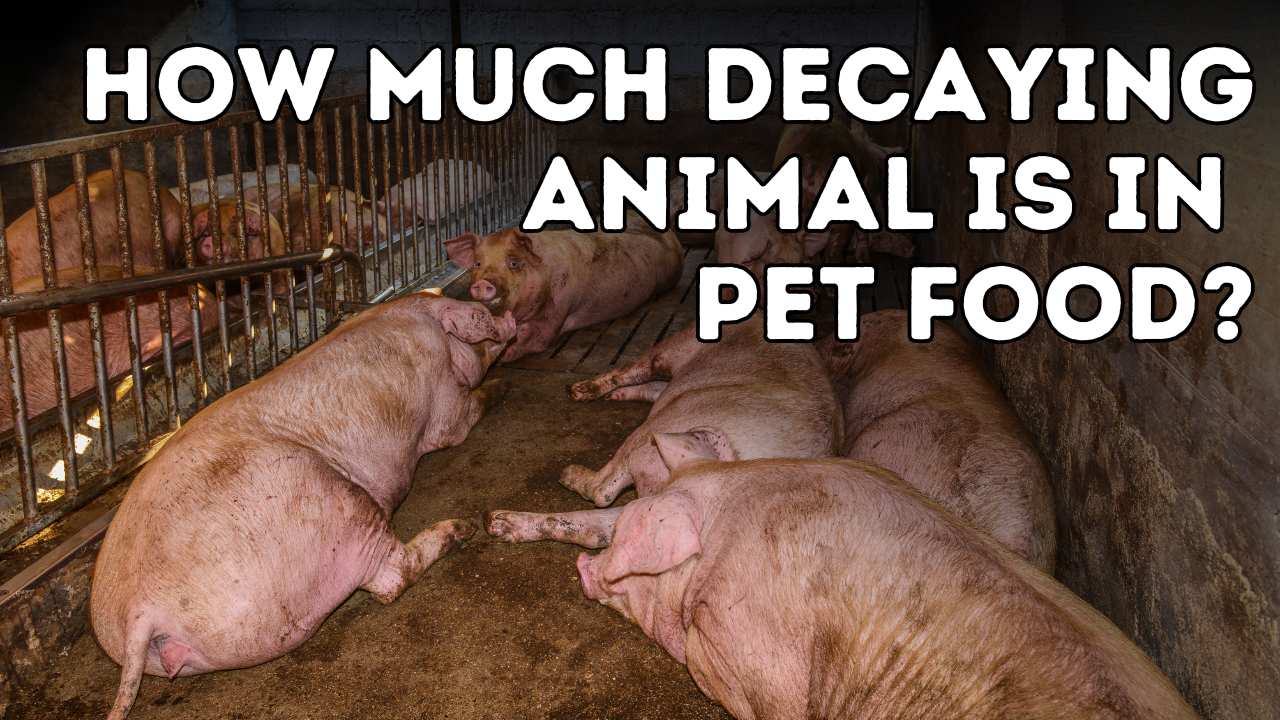What’s Hidden in Pet Food? The Surprising Amount of Decaying Animals Used

The more I read about what’s in our dog and cat’s food, the more ‘concerned’ I become..
As in there can be some very questionable ingredients.
Even MORE reason to supplement with a proven, quality, complete supplement.
I have a few that I’d suggest:
Dr Jones’ Ultimate Canine Health Formula

Dr Jones’ Ultimate Feline Health Formula


What’s REALLY in Your Dog or Cat’s Food?
As a veterinarian, I often hear concerns from pet owners about what’s truly in their pets’ food. And it’s no surprise, considering some of the shocking truths about the ingredients in commercial pet food. Today, I’m diving into what’s really lurking in the food you might be feeding your pet.
FDA’s Stance on Pet Food Ingredients
You may be surprised to learn that the FDA Center for Veterinary Medicine has allowed illegal waste to be disposed of in animal feed and pet food, without any warning or disclosure to consumers. Dr. Steven Solomon, the director of the FDA’s Center for Veterinary Medicine, has publicly stated, “We do not believe that the use of diseased animals or animals that died otherwise than by slaughter to make animal food poses a safety concern and we intend to continue to exercise enforcement discretion.”
In simpler terms, the FDA deems this practice acceptable—allowing diseased and decomposing animals to be used in pet food. And what’s more alarming is that these ‘condemned’ animals are often found in commercial pet food.
The Truth About Condemned Animal Material in Pet Food
The FDA does not require pet food manufacturers to disclose the use of condemned or non-slaughtered, decomposing animal material in their products. Even though the USDA tracks condemned animals, they don’t give full disclosure either. In fact, the USDA provides us with some alarming clues about the scale of the issue.
Every three months, the USDA discloses that around 53,605 livestock animals (cattle and hogs) were condemned. On top of that, 1,474,140 turkey and chicken carcasses were also condemned. That adds up to approximately 27 million pounds of condemned animal material being disposed of in just three months. This doesn’t even include the animals that died on farms, which are also allowed in pet food without being disclosed.
What’s Really Happening in Pet Food Manufacturing?
A picture of a pet food manufacturing plant might disturb you, as it shows just how much animal waste is being processed into pet food. But the truth remains that more than 27 million pounds of condemned animal material is disposed of every three months—and despite being considered unfit for human consumption, it’s deemed suitable for animal food by the FDA, with no requirement for labeling or disclosure to pet owners.
How Can You Protect Your Pet?
The next time you purchase pet food, ask the manufacturer if their meats are sourced from USDA-inspected and passed animals. Be cautious, as some manufacturers may claim, “Our meats are sourced from USDA inspected facilities.” But remember, condemned animal material is also sourced from USDA-inspected facilities. Ensure the manufacturer directly answers your questions—or better yet, find another brand that will fully respond to your inquiries.
Why Homemade Pet Food is the Safer Option
If you’re concerned about what’s in your pet’s food, making their food at home can be a much safer choice. But if you decide to feed commercial pet food, it’s crucial to choose a high-quality, trusted brand.
Steps to Avoid Harmful Ingredients in Pet Food
Here are a few steps to help ensure your pet is not consuming harmful ingredients:
- Purchase Human-Grade Pet Foods – Look for labels that state the food is made with human-grade ingredients (ignore claims on the website).
- Ask About Ingredient Sources – Always ask the manufacturer if all food ingredients are human-edible.
- Stop Feeding Kibble – Consider alternatives to dry kibble, which often contains low-quality ingredients.
- Make Your Own Pet Food – There are plenty of free, healthy recipes on my blog at Veterinary Secrets.
- Feed Raw Pet Food – High-quality raw food can also be a great option for your pet.
Final Thought: Keep Your Pet Safe
As a veterinarian, my priority is to ensure the health and safety of your pets. If you have concerns about what’s in your pet’s food, you can report it to the FDA through their pet food complaint page.
For a simple solution to help ensure your pet is getting the right ingredients, consider my specially formulated products:
- Dr. Jones’ Ultimate Canine Health Formula
- Dr. Jones’ Ultimate Feline Health Formula
Both are designed to provide your pets with the best nutrition and support their overall health.
Remember, your pet’s food should be a source of nourishment, not a health risk. Take the steps today to provide them with the best!

Dr Jones’ Ultimate Canine Health Formula

Dr Jones’ Ultimate Feline Health Formula





